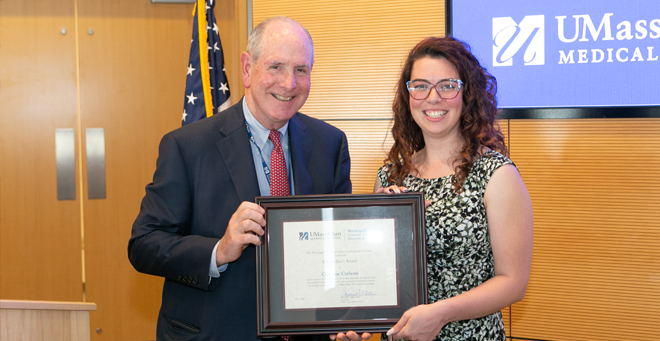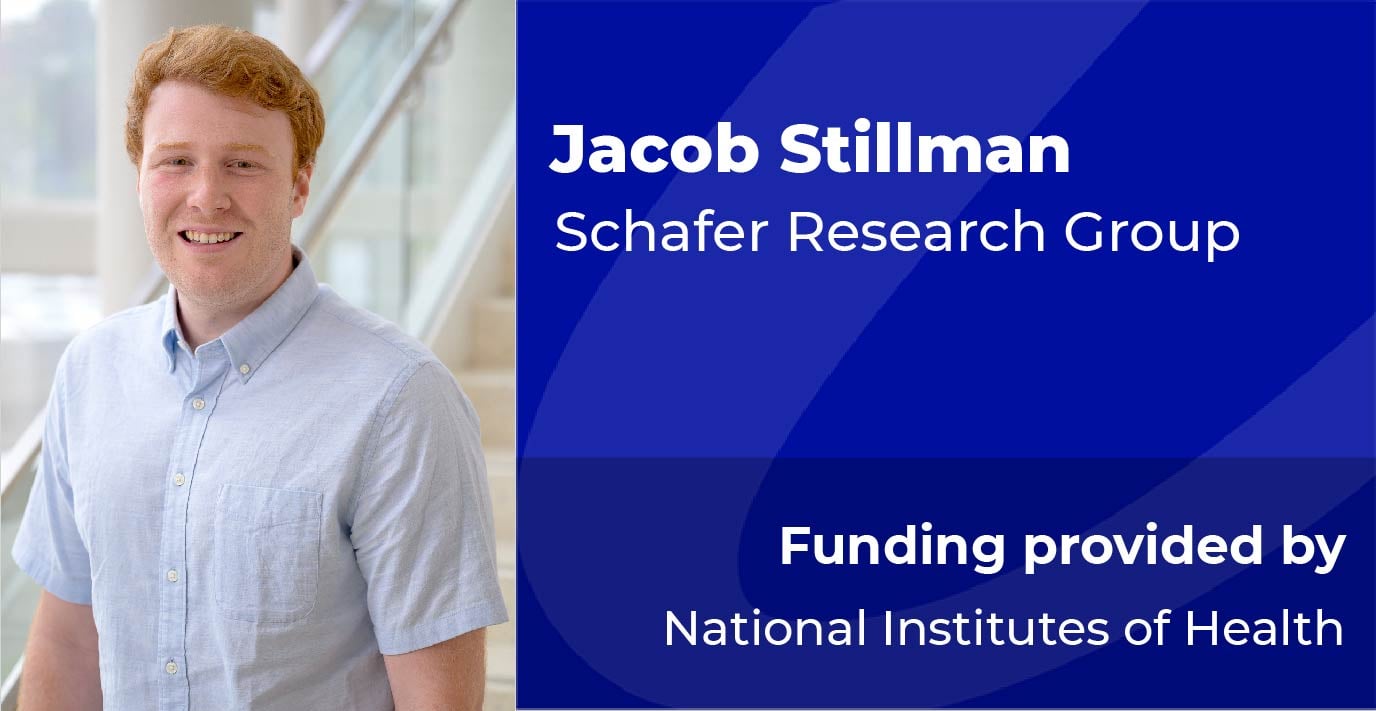Neuroscience Program
Neuroscience investigators focus on:
- The neural, molecular and genetic mechanisms that underlie nervous system development and function, learning and memory, addiction, glial function, and circadian rhythmicity;
- Mechanisms of synaptic neurotransmitter release, analysis of how neurotransmitter receptors and membrane channels operate, and how drugs act on these processes to modify cellular function and behavior;
- Disorders of the central nervous system, with special emphasis on neurodegenerative disorders, amyotrophic lateral sclerosis, autism spectrum disorders, mental retardation and other developmental disabilities.
- Development of new methods and therapies for neurological diseases, including disruption of mutant gene expression using chemically modified oligonucleotides, gene knock-down or replacement with adeno-associated viral vectors, and CRISPR-mediated gene correction.
The Graduate Program in Neuroscience brings together many components of the neuroscience community at UMass Chan Medical School. Like the Graduate Program, the neuroscience community at UMass Chan Medical School is truly interdepartmental and interdisciplinary. A critical and unique feature of the research environment at UMass Chan Medical School is that departmental affiliations affect letterheads but not interactions or collaborations. This atmosphere is especially conducive to the scientific growth of graduate students obtaining their degrees in an interdisciplinary field like neuroscience.
Participating faculty have primary appointments in 15 different departments, with the largest concentrations of faculty (> 10 each) located in the Departments of Neurobiology, Neurology and Psychiatry. Clusters of neuroscientists are located in many other Departments, with 3 or more Program members in each of eight other departments: Program in Molecular Medicine, Biochemistry & Molecular Biotechnology, Molecular, Cell & Cancer Biology, the RNA Therapeutics Institute, Microbiology, Radiology, Neurological Surgery and Pediatrics. This diversity of affiliations reflects the diversity of research interests in the Program, which range from investigation into basic mechanisms of neuronal function in model organisms and identifying novel disease genes to development of therapies for neurodegenerative diseases and improving clinical care for children with developmental disabilities.
REQUIREMENTS FOR SPECIALIZATION
Graduate students who specialize in Neuroscience will acquire a broad background in the concepts of contemporary neuroscience, gain exposure to state-of-the-art techniques and will acquire a foundation in the function of the nervous system through an integrated program of advanced coursework, laboratory research, and seminar and journal club attendance.
All graduate students within the BBS division of the Morningside Graduate School of Biomedical Sciences must complete the Biomedical Sciences Core Curriculum, consisting of Scientific Inquiry in Biomedical Research, Responsible Conduct of Research, Part 1 (Fall, Year 1), Preparation for Qualifying Exam (Fall, Year 2), and Responsible Conduct of Research, Part 2 (Year 3). Students explore research areas of interest to them by participating in three rotations and then will select the faculty mentor who will supervise their thesis research. Thesis Research Advisory Committee meetings are required annually during thesis research. Students in the third year and beyond are also required to complete an annual Individual Development Plan, and the TRAC meeting will include discussion of progression toward both research and professional development goals.
In addition to the Morningside Graduate School of Biomedical Sciences Core Curriculum, students in the Graduate Program in Neuroscience are required to take at least three (3) graded elective courses of 2-4 credits each during their graduate career, of which one must be Cellular, Molecular and Developmental Neuroscience (BBS 780). This introductory course is usually taken in the Spring semester of the first year and covers topics including ionic mechanisms underlying neuronal excitability, neurosecretion, neurotransmitters and receptors, mechanisms of neuronal development and research methods in neuroscience. Two other elective courses are offered by the Program: Systems and Circuits Neuroscience (BBS 820) and Bases of Brain Disease (BBS 782). Elective courses offered by other graduate programs can also be taken to meet the elective course requirements. The elective courses are selected to yield a program of study tailored to meet the needs of each student.
Program in Neuroscience students are expected to attend the weekly Neuroscience Program Seminar Series lectures, featuring visiting experts from outside the university, and to participate in a seminar series in their home department. Students are also required to enroll in Neuroscience Seminar for two semesters. (Two discontinued courses, Communicating Neuroscience: Learning by Doing, and Journal Club in Neuroscience are treated as equivalent to Neuroscience Seminar in meeting this requirement).
OUR LEADERSHIP & FACULTY
PROGRAM DIRECTOR
David Weaver, PhD
Professor
email Dr. Weaver
OUR FACULTY
The Program in Neuroscience is interdepartmental, administered under the umbrella of the Department of Neurobiology. Participating faculty have primary appointments in several departments, with the largest concentration of faculty coming from the Departments of Neurobiology, Neurology, Psychiatry, Microbiology, Medicine, and Molecular Medicine.
OUR STUDENTS
STUDENT EXPERIENCE
The program maintains a schedule of seminars and intramural research presentations that ensures a cohesive program. This atmosphere is especially conducive to the scientific growth of graduate students obtaining their degrees in neuroscience.
STUDENT SPOTLIGHT
Megan Fowler-Magaw, PhD candidate, Neuroscience
 Megan Fowler-Magaw studies a specific gene that is found in 97 percent of Amyotrophic lateral sclerosis (ALS) cases. The TDP-43 gene is a transactive response DNA-binding protein.
Megan Fowler-Magaw studies a specific gene that is found in 97 percent of Amyotrophic lateral sclerosis (ALS) cases. The TDP-43 gene is a transactive response DNA-binding protein.
-
 Read more
Read more -

Morningside Graduate School of Biomedical Sciences speaker to urge pursuit of truth
Read more -

PhD candidate Kathleen Morrill receives Harold M. Weintraub Graduate Student Award
Read more
-

Examining the Role of a Pathogenic HTT Isoform, HTT1a, in Somatic Expansion and RNA Aggregation in Huntington's Disease
Read more -

Investigating the Role of cnb-1 and chpf-1 in GABA DD Motor Neuron Remodeling and Synapse Maintenance
Read more -

Investigating the Role of Endosomal Toll-Like Receptors in Remyelination
Read more
-

Investigating mechanisms of neurodegeneration
Read more -

Dissecting ADAM10 function in microglia-mediated synapse elimination
Read more -

Gq Receptor Regulation of Striatal Dopamine Transporters
Read more -

Fluorescent visualization of complement-dependent pannexin activity in microglia
Read more

